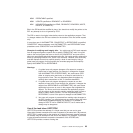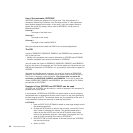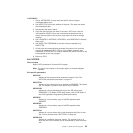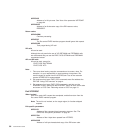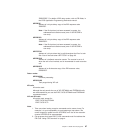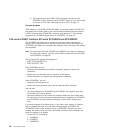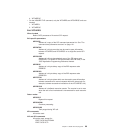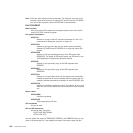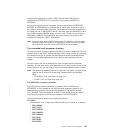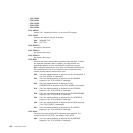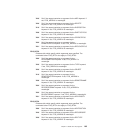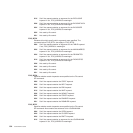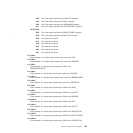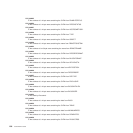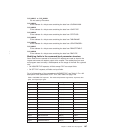Note: Take care when using recursive commands. For example, you must avoid
entering a loop when issuing a file control SPI request from the XFCAREQ
exit. Use of the recursion counter UEPRECUR is recommended.
Exit XFCAREQC
When invoked
After a file control SPI request has completed, before return from the file
control SPI EXEC interface program.
Exit specific parameters:
UEPCLPS
Address of a copy of the API command parameter list. See “The
command-level parameter structure” on page 101.
UEPFATOK
Address of a 4-byte area that can be used to pass information
between XFCAREQ and XFCAREQC on a single file control SPI
request.
UEPRCODE
Address of a 6-byte hexadecimal copy of the EIB return code
EIBRCODE. For details of EIB return codes, see EIB fields, in the
CICS Application Programming Reference manual.
UEPRESP
Address of a 4-byte binary copy of the EIB response code
EIBRESP.
UEPRESP2
Address of a 4-byte binary copy of the EIB response code
EIBRESP2.
UEPTSTOK
Address of a 4-byte token which can be used to pass information
between successive file control requests within the same task (for
example, between successive invocations of the XFCAREQC exit).
UEPRECUR
Address of a halfword recursion counter. The counter is set to zero
when the exit is first invoked and is incremented for each recursive
call.
Return codes
UERCNORM
Continue processing.
UERCPURG
Task purged during XPI call.
XPI commands
All can be used.
API and SPI commands
All can be used, except for:
EXEC CICS SHUTDOWN
EXEC CICS XCTL
You can update the copies of EIBRCODE, EIBRESP, and EIBRESP2 that you are
given in the parameter list. If you update the values, file control copies the new
100 Customization Guide




